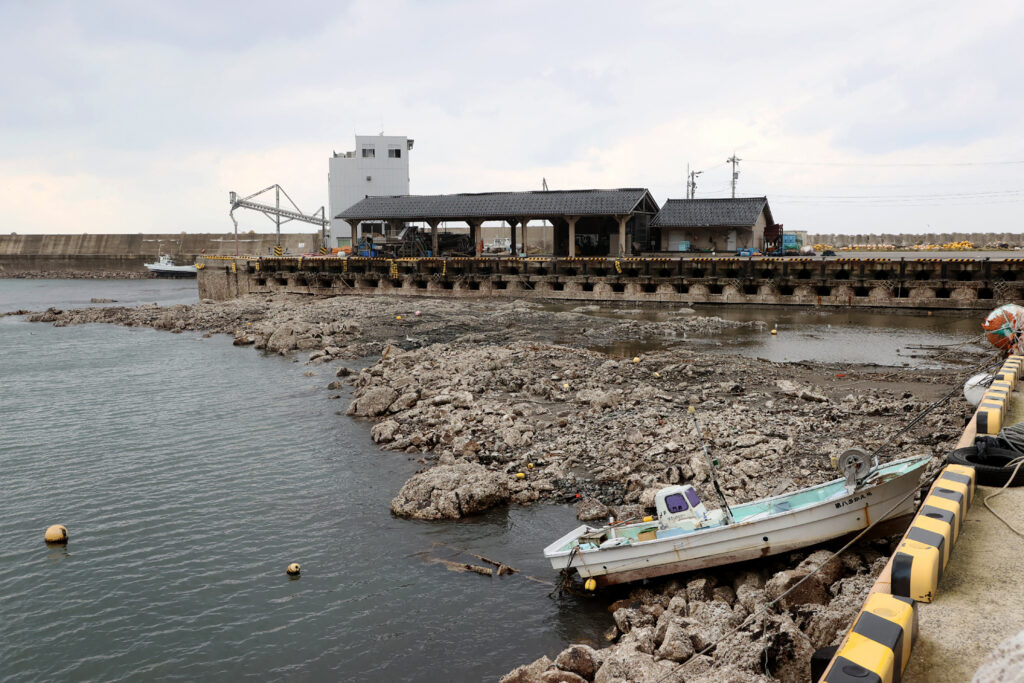
- ARAB NEWS
- 31 Jul 2025

UCHINADA: A town in the central Japan prefecture of Ishikawa is facing a long and arduous road ahead for reconstruction following a massive earthquake that hit the region five months ago, plagued by liquefaction damage.
Around 3,500 cases of liquefaction damage from the 7.6-magnitude quake that struck the Noto Peninsula on Jan. 1 have been confirmed in residential land in the prefecture, according to the land ministry.
The Ishikawa town of Uchinada was hit with a lateral flow, in which the ground shifts horizontally, causing roads built on top to be damaged and homes to tilt. The lateral spreading also damaged sewer pipes buried underground, leaving around 60 homes still without sewage access.
Large-scale ground improvement work will likely be necessary for normal life to return for local residents.
The ministry has launched a geological survey to assess the risk of further liquefaction occurring and to decide the most suitable ground reinforcement method.
“Given the uniqueness of the lateral spreading, the results of the survey are unlikely to come out until around March next year,” a ministry official said.
Hiroaki Okano’s home in the Nishiaraya district, which was hardest hit by liquefaction, shifted sideways by about a meter.
The 53-year-old said he is considering whether to apply for prefectural subsidies to fix his tilting home.
His biggest concern is the area’s weak foundation.
Saying that he recently felt his home’s slant had increased when he returned after a few days away, Okano added, “Even if I fortify my home, my house may still be swept away if the ground of the surrounding area remains soft.”
A 62-year-old resident of the town’s Miyasaka district, which is located next to Nishiaraya, said that half of his house sank around 20 centimeters as a result of the liquefaction.
“I don’t have enough money to fix the issue,” he said. “I have no choice but to continue living in my house” in its current state.
If a decision is made to implement large-scale ground improvement work, the biggest obstacle will be getting agreement from affected residents.
After the March 2011 earthquake that mainly hit northeastern Japan, 90 districts had considered ground improvement work. Only 10 of those areas ended up implementing soil improvement work, which took over nine years in some places.
Following the 2016 earthquakes in the southwestern Japan prefecture of Kumamoto, the city of Kumamoto allowed ground improvement work to be implemented with approval from 80 percent of its residents.
Despite the bar being lowered, eight of the 10 districts that had debated whether to implement such work ultimately abandoned the plans. This was due to the lack of consensus among residents, with the damage differing from household to household.
On Sunday, around 300 Nishiaraya residents met to discuss the future of the district.
Many elderly residents wanted to remain in Nishiaraya, while many younger residents were skeptical about reconstruction, according to Kunihiko Kuroda, chief of the district.
As the reconstruction process may take more than five to seven years, “elderly residents are resigning themselves” to bleak prospects, Kuroda said.
“It’s frustrating that the days are just passing by,” he added.
JIJI Press